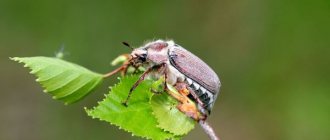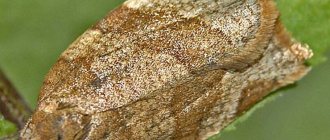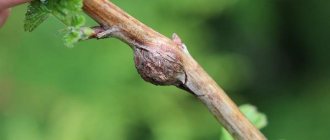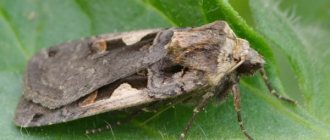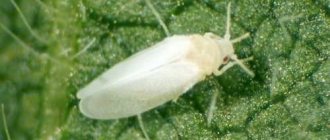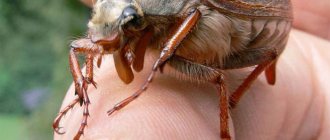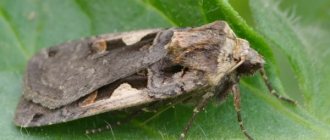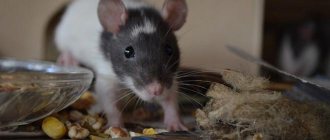There is no such person who does not love the month of May. Nature, waking up after hibernation, has gained strength and is ready for further development, which is signaled, among other things, by the lush color of the gardens. It is during this period that the cockchafer appears (photo of an adult individual below), becoming active in the dark and knocking on the windows of the house, attracted by the light of light bulbs. In appearance, this large beetle, especially from the point of view of a city dweller, popularly called Khrushchev, is absolutely harmless. But is this really so?
May beetle - photo of an adult insect
Who is Khrushchev?
You may be surprised, but today the cockchafer is still a mystery for entomologists. In nature, there are several species of it, which are hardly distinguishable from the outside. All of them, at the stage of adult sexually mature individuals, prefer to live near deciduous trees. The beetles fly for 20-40 days at night, buzzing loudly all the time. During the day, activity subsides; they sit quietly, hidden under the leaves. Khrushchev overwinters in the ground, like its larvae, often 1-1.5 m deep.
Structure
- Khrushchev has existed for thousands of years, since nature provides it with ease of obtaining food. Scientists have proven that this beetle has a superbly developed visual apparatus and sense of smell.
- The body, like crustaceans, received protection in the form of a hard chitinous shell.
- Khrushchev's legs are very strong. It is with them that he breaks his way to the shelter where he spends the winter.
- The wings are very small compared to the body. According to all the laws of gravity, they are not capable of lifting a heavy body above the ground. However, realities are full of paradoxes and the flying cockchafer is a clear confirmation of this. The insect's flight speed is 3 m/s. It turns out that before the flight, the Khrushchev, breathing intensely, saturates the body with air. When flying, it uses only its hind wings, and simply stays in the air with its front wings.
Larvae
The larva of the cockchafer is, in principle, harmless. Its nutritious diet is composed of grass roots, humus, etc. But upon reaching 2 years of age, the insect in the larval stage becomes a pest, causing a lot of trouble for farmers. So, the larva eats:
- roots of garden crops;
- roots of trees and bushes;
- vegetable tubers;
- flower and plant bulbs;
- strawberry plantings;
- seedlings
Important! The super gluttony of the cockchafer larva occurs if it manages to survive to 4 years of age. It is at this time that it turns from a larva into a full-fledged beetle, ready for reproduction.
Harm from the cockchafer
May beetles eat any plant food, including pine needles. After sunset they begin to fly and buzz loudly. At night, insects sit on trees, sometimes gathering on a branch in garlands, and gnaw leaves, exposing tree branches. Sometimes pests feed during the day.
In the first year of life, the larvae eat the roots of herbaceous plants. Starting from the second year, Khrushchev destroys the roots of trees, including fruit trees. Even mature fruit trees that are already producing fruit can die from the larvae. As soon as they emerge from the ground, the beetles take flight. On a warm May evening, they can fly overhead like meteors. And everywhere insects find an abundance of food, since they are unpretentious and can eat everything: young leaves, buds of trees and shrubs, and even shoots. At this time, the beetles noticeably eat away at the trees, causing damage to the plantings of birch and oak trees.
When beetles fly en masse, the harm they cause can be enormous. Now that monitoring has been established everywhere, the number of the pest does not reach a high level, but the cockchafer still causes great harm in the vast forest areas of Russia. Sometimes its larvae can completely destroy only planted groves of young pine trees.
Getting rid of Khrushchev
Physical removal
- Shake them off the trees in the morning, when the beetles are frozen, and destroy them by mechanical force.
- Regularly dig up tree trunk circles. All larvae must be selected manually.
- Leaves under trees should be burned.
Light traps
At night, the lantern is lit. A container of water mixed with a small amount of kerosene is placed under it. Insects attracted by the light will hit the lamp body and fall down. As an option, you can place a basin coated with grease or spread newspapers covered with long-drying glue. During the night, a considerable number of insects will gather in such traps, which will be burned or destroyed in some other way.
Biological method
Set up a house on your site for starlings or rooks. These birds love to feast on large beetles, which are a source of huge amounts of nutrients. Where these birds live, there is no place for Khrushchev. It is known that a pair of starlings, during the period of raising chicks, consumes and feeds to their offspring up to 8,000 adults and their larvae.
Chemicals
Against soil-dwelling pests, such as cockchafers, the modern market offers a whole range of chemicals of the insecticidal group:
- "Fix it";
- "Zemlin";
- "Aktara";
- "Bazudin";
Also, the Ukrainian-made Antikhrushch pesticide enjoys positive feedback from consumers.
Where does the cockchafer live?
There are 2 subspecies living in Russia and the CIS:
- west;
- Oriental.
They differ in shape, belly color, and mustache pattern. The usual habitat of western cockchafers is meadows and clearings, surrounded by plantings exclusively in the warm season. The properties of the digestive apparatus of the eastern subspecies provide a preference for living exclusively under the crowns of deciduous trees.
They prefer to settle in forests and wooded steppes, and thrive in plantations of young fruit trees. There is little benefit to plants from such a neighborhood. They can also live among coniferous flora. The love for spruce trees arose due to the fact that they do not grow well on hard soil. And the property of parasites is such that it is much easier for them to live inside soft soils than clay soils.
The larvae live underground. The main diet is the root systems of plants that are located next to the burrows. The period of development to adulthood is quite complex, taking from 3 to 5 years, depending on the ambient temperature. In warmer regions, beetles are characterized by rapid development. Before metamorphosis, there is a process of transition to the state of a pupa, which reaches maturity after a few months.
The typical time of appearance of the parasite is early spring; its lifespan does not exceed several months. During this time, they manage to mate, create a clutch of eggs and die.
May beetle larvae: fight (video)
Morphology
- The cockchafer has a thick, strong body, with well-developed legs and two pairs of wings. The elytra are hard and chitinous. Hidden under them are the rear flying membranous wings with veins.
- The pygidium, or the end of the abdomen, is not covered by wings. The body is divided into three sections - head, chest and abdomen. The abdomen, consisting of 8 segments, is in fixed connection with the chest.
- The 5 segments of the walking leg are movably connected. The last segment has a claw. Each chest segment carries a pair of legs - 3 pairs in total. The insect clings to bark and leaves with its feet and digs holes in the soil.
- The mouthparts are gnawing. The adult insect feeds on leaves. Once in the stomach, food is ground by chitinous teeth designed for grinding. The final digestion and absorption of food takes place in the intestines.
- The circulatory system is represented by the heart in the form of a blindly closed tube and the aorta, and is not closed. The fluid that circulates freely in the body cavity is called hemolymph. By washing the internal organs, it supplies them with nutrients.
- The respiratory system consists of 18 spiracles located on the chest and abdomen of the beetle. Oxygen enters the spiracles, then the branching trachea. Then it enters all cells of the body.
- Malpighian vessels, thin tubes extending from the alimentary canal, perform an excretory function.
- Reproduction system. The female genital organs are paired ovaries, which pass into tubular oviducts, which have a common excretory canal through which the eggs come out. The male genital organs consist of 2 testes, united into the ejaculatory canal.
- There is a pair of compound eyes on the head. The olfactory organs are represented by plates located on the antennae.
- Nervous system in the form of the suprapharyngeal and subpharyngeal nerve ganglion and the abdominal nerve cord.
Types of beetle
On European territory, as well as in Kazakhstan, Siberia, and Transcaucasia, beetles of two types are predominantly found: eastern beetle and western beetle.
The Western May beetle has spread throughout Eastern and Western Europe. What does the Western cockchafer look like? Black, acorn-like body up to 32 mm long, with brick-brown elytra. The larva is white, arched, cylindrical, with brown jaws. The last section of the abdomen on the lower side is strewn with conical setae arranged in 2 rows. The dimensions of the larva reach 65 mm.
Larvae and beetles overwinter in the soil at a depth of 25 to 150 cm. Adult insects, after the blossoms of apple trees fall, lay eggs in groups in the soil to a depth of 40 cm. Oviposition is located near the places where they feed. After about 30 days, larvae emerge from the eggs and live in the soil for 3 years. Pupation occurs in June-July. The transformation of the pupa into an adult occurs in 30-40 days.
During the wintering period, the beetles become very exhausted. Therefore, in the spring they need increased nutrition. The beetle season begins at dusk, just after sunset. Adult beetles eat tree leaves, thereby weakening and suppressing plantings.
The larvae of the cockchafer are initially inactive. The main food is soil with plant remains and small roots. With the onset of cold weather, they sink deeper into the ground.
At the end of the summer moult for the second instar, the larvae begin to eat the roots and trunks of plants.
The greatest damage is caused by second and third instar larvae. They are especially voracious on the eve of pupation.
The larvae gnaw the roots not only of young seedlings, but also of fruit-bearing trees. Productivity and cold resistance of gardens are reduced.
The eastern May beetle is common in Western Europe, Siberia, Kazakhstan, and Transbaikalia.
The cockchafer looks the same as the western one. The difference is that it has black antennae and legs, as well as a chitinous protrusion on the terminal segment of the abdomen. It emerges from the soil 10-15 days earlier than the western one. It feeds day and night, perching on trees. Causes damage to all types of deciduous and fruit trees, as well as pine and larch.
Interesting facts about the cockchafer
The only benefit from cockchafers, or rather, from their larvae, is that they are excellent for fishing bait. According to fishermen, bream, ide, chub and perch are well caught using larvae.
Khrushchev fly contrary to the laws of physics. Scientists cannot understand how the thin wings lift three times as much weight into the air as they should.
It has also been proven that these insects cannot be knocked off course by any tricks; they still return to their route and are well oriented in the area.
Benefits and harms
The diet of the cockchafer consists of young shoots and leaves. Khrushchev treats both deciduous and fruit trees equally favorably, gnawing birch, linden, lilac, oak, willow, maple, cherry, sea buckthorn, plum, currant, aspen, and more.
In conifers (spruce and pine) it eats catkins with appetite.
In a month and a half, an adult pest is capable of leaving only “horns and legs” from the tender shoots. Khrushchev's "children", unlike their "parents", are more omnivorous, but carry out their destructive activities in the soil.
The larvae spoil seedlings, devour root vegetables and corn, garden strawberries and other berries; They gnaw at tree roots and do not shy away from weeds and lawn grass.
The most effective way to get rid of larvae is considered to be planting white clover, which produces nitrogen, which is harmful to the offspring of cockchafers.
The larvae spoil seedlings, devour root vegetables and corn, garden strawberries and other berries; gnaw tree roots, do not shy away from weeds and lawn grass
The benefits of Khrushchev have long been appreciated by fishermen and children: the former - using adult individuals and larvae as bait; the second - selflessly chasing large buzzing creatures.
May beetles are also needed by birds and amphibians as a protein dish.
Description
Body structure of the cockchafer
Representatives of the genus are distinguished by their large sizes for beetles - they can reach 31.5 mm in length. The cockchafer consists of legs, head, abdomen and thorax.
The body of the cockchafer is convex, oblong-oval, barrel-shaped. It is covered with small hair-like scales, which on the head and pronotum are longer and form longitudinal stripes. The body color can be black or red-brown, with yellow-brown or red-brown elytra, sometimes with a greenish tint on the pronotum and head. There are two varieties of chafers: red beetles with red or yellowish pronotum and legs, and completely black beetles. Red beetles live most often in northern regions in open areas with weak darkness, while black beetles live in the southern climate in the shade. Sometimes the chafer bug is mistakenly called the green bronze beetle, an insect that is harmless to agriculture and is listed in the Red Book.
On the chest of the cockchafer there are three pairs of walking legs, and each of them is attached to a specific segment. The legs are covered with hairs and end with claws, with which the insect clings to bark and foliage. On the head of the beetle there are sensory organs and a mouth, on the lower lip of which there is a pair of probes - the organs of touch and taste. On the sides of the head there are two complex compound eyes, in front of which there is a pair of antennae with expanded plates - the organs of smell, which are more developed in the male than in the female. The beetle can tilt its head, but cannot turn it left or right.
- Thrips: how to fight on indoor plants and in the garden
The beetle's abdomen is connected to the thorax. Its upper part is entirely hidden by the elytra, from under which only the pointed tip of the abdomen is visible. On the abdomen, under the elytra, there are the wings of the cockchafer and small holes - spiracles.
The structure of the cockchafer varies somewhat depending on the sex of the individual: in females, thick white scales can sometimes be seen on the elytra. In addition, the antennae of males have the shape of a large curved club, consisting of 7 plates; in females it is a smaller club and consists of 6 segments.
Stages of development
The life cycle of the cockchafer lasts from 3 to 5 years, and life expectancy depends primarily on climate. The insect spends almost its entire life underground and flies for only 30-40 days.
The female cockchafer is ready for reproduction within 2-3 weeks after emerging from the pupa. After mating, she lays eggs in the ground, at a depth of about 10 cm. Then the female again looks for a male and lays eggs again - there can be four such cycles, and the total number of eggs laid by one female is about 70 pieces. After the last clutch the female dies.
The eggs of cockchafers are off-white in color, about 3 mm long and about 2 mm wide. They are soft at first, but gradually harden. Eggs take 3-4.5 weeks to develop, and if conditions are not favorable for their maturation, it may take up to 50 days.
The thick curved larvae emerging from the eggs are light in color, their heads are brown or light yellow, and each larva has three pairs of tenacious little legs. During the first summer, the larvae feed on the roots of grasses and humus; for the winter they climb into the ground to a depth of one and a half meters, and in the spring they again get closer to the roots of young trees, which they feed on the next season. In the third year, the beetle larva can reach a length of 45 to 65 mm and easily gnaws through the roots of adult trees, and in the fourth year it turns into a pupa.
- Apple tree: diseases and pests and their control
The pupa is located in the ground at a depth of 20-40 cm. Its shape resembles an adult cockchafer, but with short wings and a head tucked under the chest. The pupa is about 25 mm long and approximately 18 mm wide. This phase of development lasts from two to four weeks, starting from the end of July or beginning of August, after which an adult insect emerges from the pupa, which goes into suspended animation until spring, and closer to May, when warm weather sets in and leaves and beetles appear on the trees begin to fly and lay eggs.
Harm from the cockchafer
The Khrushchev beetle feeds on young leaves of various trees - maples, birches, aspens, oaks, rowan trees, poplars and lindens. And in gardens, the victims of Khrushchev are such fruit trees and shrubs as cherry, sea buckthorn, plum, black currant and apple tree - the favorite tree of Khrushchev. Even lilacs attract the pest, but May beetles are not interested in herbaceous plants. It has been noticed that every 3-5 years there is a mass migration of cockchafers: red beetles develop on a four-year cycle, and black beetles on a five-year cycle. In such “summer” years, beetles can eat all the leaves on the trees within 1-2 months. But in the intervals between these “flying” years, cockchafers are almost never found in large numbers.
Not only adults, but also beetle larvae harm plants: they gnaw the roots of vegetable crops (potatoes, corn and any seedlings), fruit and ornamental trees and shrubs, strawberries, lawn grass and even some weeds. One two-year-old larva can eat the roots of a two-year-old pine tree in a week, while a three-year-old larva will need only one day to do this.
Methods for controlling adult May beetles
The cockchafer is a dangerous pest in the garden. Therefore, combating it is mandatory to preserve the harvest. It is best to catch insects using different traps. You can catch the cockchafer using the following methods:
- hand catching;
- light trap;
- glue trap.
Light trap
To prepare a light trap:
- You need to prepare a small container and coat its inner surface with a sticky substance.
- Attach a light source to the bottom of the container. A flashlight or a standard electric lamp will do. Next, wait until nightfall.
- At night, set up an improvised trap in an open area. Thus, the unwanted guest flies into the light, getting inside the sticky liquid. In addition, there are other types of insects that cause harm.
Glue trap
To prepare a glue trap, you need to purchase a sticky substance for flies at any store, then apply it to paper or newspapers. This liquid attracts cockchafers, which stick to the paper.
Natural enemies
Hedgehogs feed on cockchafers of all ages. Therefore, when a swarm of insects appears, you need to try to provide the prickly helpers with decent living conditions on the site. Then they will independently and quite effectively fight the pest.
The presence of starlings and crows in the area also helps. Winged helpers can find them even underground and successfully dig them out from there. Therefore, installing birdhouses is a good control method.
Important! Also natural enemies are field mice and rats. Animals living in burrows often encounter individuals of the cockchafer, eating them.
